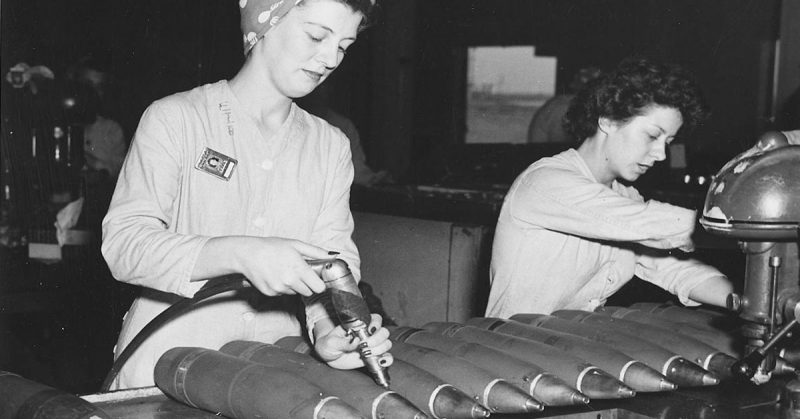The attack by the Japanese on Pearl Harbour on the 7th December 1941 not only drove thousands of young men from their homes and into military barracks for basic training, it also prompted many young women to take up the slack where the men had left gaps in the manufacturing world.
One such young lady was Ann Bjorneby, née Kloser, who with her two girlfriends decided that they intended to help the war effort. At the time she worked in a factory, packaging butter, so she resigned from her job and, taking her life savings of $15, she set off for Omaha, Nebraska.
On arriving in Nebraska, she joined the US Army, in the Woman Ordnance Workers Division. This new division of the Army was recruiting women to be trained to fill positions, normally occupied by men, so that the men could be released to fight. Ann was trained as an auto technician and spent many hours studying the tools that she had been given. This study took place in the latrine as it was the only place that had electric light after hours!
She passed her tests and was posted to Camp Hill in Colorado and then moved on to Hill Field in Utah and finally was posted into the US Navy. She worked on all types of engines during her service including cars, Jeeps, trucks and even airplanes. At the tender age of 22, she was honorably discharged as an apprentice seaman, from the Navy in August 1945. She did, however, remain with the Navy, in a civilian capacity, for a further eight years.
Still, today, Ann is reticent about her service with the armed forces. The posters showing a muscled Rosie the Riveter did not portray how the women felt about their service. Ann did not see herself as a ‘veteran’ and though she celebrated Veteran’s Day with her husband, Otto, each year, she felt that the term referred to him rather than to herself. Her husband fought with the U.S. Army’s 10th Mountain Division. He fought on snow skis and saw action on the Aleutian island of Attu where he fought against the Japanese. Sadly her husband passed away in 1982.
In the 1970s, recognition started to flow for the thousands of women who filled in for their male counterparts and laws were passed giving them veteran status. Even with this status many of these women felt uncomfortable being recognized as veterans. Regina T. Akers, a historian with the Naval History and Heritage Command in Washington, D.C. has worked extensively with these female veterans and recorded their stories, but found in almost every case these women were self-effacing about the contribution they made, HeraldNet reported.
It is clear that without the contribution made by these women the war effort would have ground to a halt in many parts of the world. Their work in factories and on production lines around the globe supported the war and the men fighting on the front lines.
